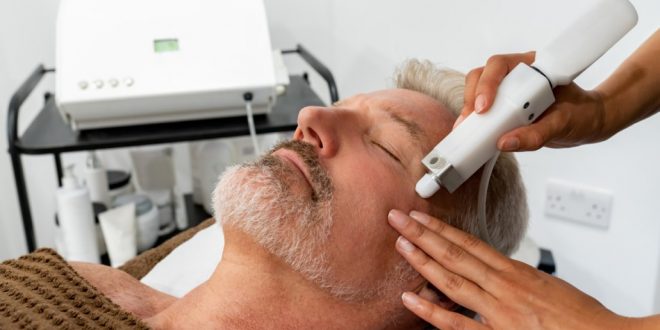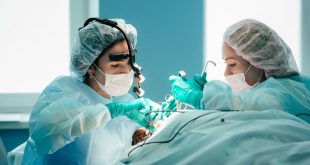Skin resurfacing is the process of providing significant and long-lasting improvement of sun-damaged, unevenly pigmented, or coarsely wrinkled facial skin. You may be a good candidate for one if you have a light complexion that burn easily and have many fine facial lines. Consider also if you have deep lines around your lips and eyes as well as when you have moderate wrinkling at rest with or without splotchy pigmentation. Usually you will undergo a single procedure though it is not uncommon to have a second resurfacing treatment one or more years after your initial procedure. But no matter ho many times you’ll come back, it is important that a personal consultation should be the first step you’re your doctor to assess your physical and emotional health. During this period, you can also discuss your specific cosmetic goals for surgery. However, when you arrive at the consultation, be sure to be prepared to provide complete information about your previous surgeries, past and present medical conditions including acutane treatment for acne, treatments you have received as well as the medications that you are taking, including nutritional supplements and herbal remedies. There are many types Skin Resurfacing but we will tackle only the most popular of all.
Laser Skin Resurfacing
The Laser Skin Resurfacing is also called the Laser peel is the technique of using a carbon dioxide laser (CO2). This procedure is done to remove areas of sun or trauma damaged or wrinkled skin, layer by layer. Through the laser technique, it will evaporate the first three of the six layers of your skin which is what makes Laser resurfacing a very effective tool in skin improvement. If you have an aged skin, acne scars and other scars then you should try it the laser way. In aged skin one treatment will have significant effects right away. However, in severely sun damaged and aged skin sometimes a second treatment will be helpful. Also, in significant acne scars, the procedure is sometimes performed twice. The first operation will cause your skin about a 30 to 50% improvement while the second operation causes a 20% to 30% improvement. However, Just keep in mind that the procedure is not perfect and unfortunately, there is no way to create a 100% elimination of acne scars.
Still, the Laser Skin Resurfacing is most commonly used to minimize the appearance of the superficial, fine lines around the mouth (smoker’s lines) and the eyes (crow’s feet or smile lines). It can sometimes be performed on the entire face or only in problem areas like the cheeks for acne scarring or wrinkled areas like the eye and lip area. It is also usually performed using Light Sleep IV sedation and takes approximately 30 to 90 minutes. The procedure involves laser passed over the area of treatment in short computer controlled bursts which evaporate layers of damaged skin. As a result, there may be redness and hyperpigmentation and sometimes even hypopigmentation in the area of repair but there are usually no real scars if performed by a very qualified surgeon, so choose him or here carefully. Other than carefully choosing your surgeon, care should be taken to evaluate your skin for possible hypertrophic or keloid scarring possibilities. If you don’t then there is always the possibility of an obvious demarcation line where the laser passes and where it does not. Unfortunately there are risks that unusual scarring may result if you are not that truthful or do not have knowledge of your heritage or family’s scarring background.
However, on the good side, if you do get a Laser Skin Resurfacing, then your skin is treated with the laser and which then tightens and gaining a youthful appearance. As a consequent, the action of the laser actually causes the collagen to thicken and the elastic fibers in the skin to increase in number giving your skin the properties more similar to the skin properties you have in an earlier time in your life.
Anesthesia Used
During the treatment you will be able to be asleep with the help of Light Sleep IV sedation. Sometimes too, a topical anesthetic or local anesthetic is used for ease of discomfort when you are about to wake up. However, see to it that your doctor should prescribe you an oral medication and/or topical anesthetic for pain relief once you are home.
Risks with Laser Skin Resurfacing
As with any operation, there are certain risks associated with this procedure, though they are minor compared to the rest. The risks and complications involved with Laser Skin Resurfacing include but are not limited to prolonged hyper-pigmentation. However, when patient darkening or brown discoloration will occur, cure this with bleaching creams and this will generally resolved the discoloration in 2 to 3 months. There is also prolonged redness which occurs in 3-5% of patients and which delays the fading to normal color by about 2 months. Also, there may be more intense burns associated with laser resurfacing that is why you must take care in choosing your surgeon wisely. In fact, a specialist should be sought as just any surgeon who is not experienced with the technique and light touch could very well burn you rather deeply, making your skin worse.
As a word of warning also, patients with olive skin, brown skin or black skin may be at risk for pigmentation changes no matter what type of resurfacing method. Even though it’s clear that laser resurfacing may offer a number of advantages over other resurfacing methods such as precision, little bleeding and less post-operative discomfort it isn’t for everyone. In some cases, an alternative skin resurfacing treatment, such as dermabrasion or chemical peel, may prove to serve you better.
 Lesbian, Gay, Bisexual, Transgender & Intersex News Lesbian News, Gay News, Bisexual News, Transgender News, Intersex News, LGBTI News
Lesbian, Gay, Bisexual, Transgender & Intersex News Lesbian News, Gay News, Bisexual News, Transgender News, Intersex News, LGBTI News




